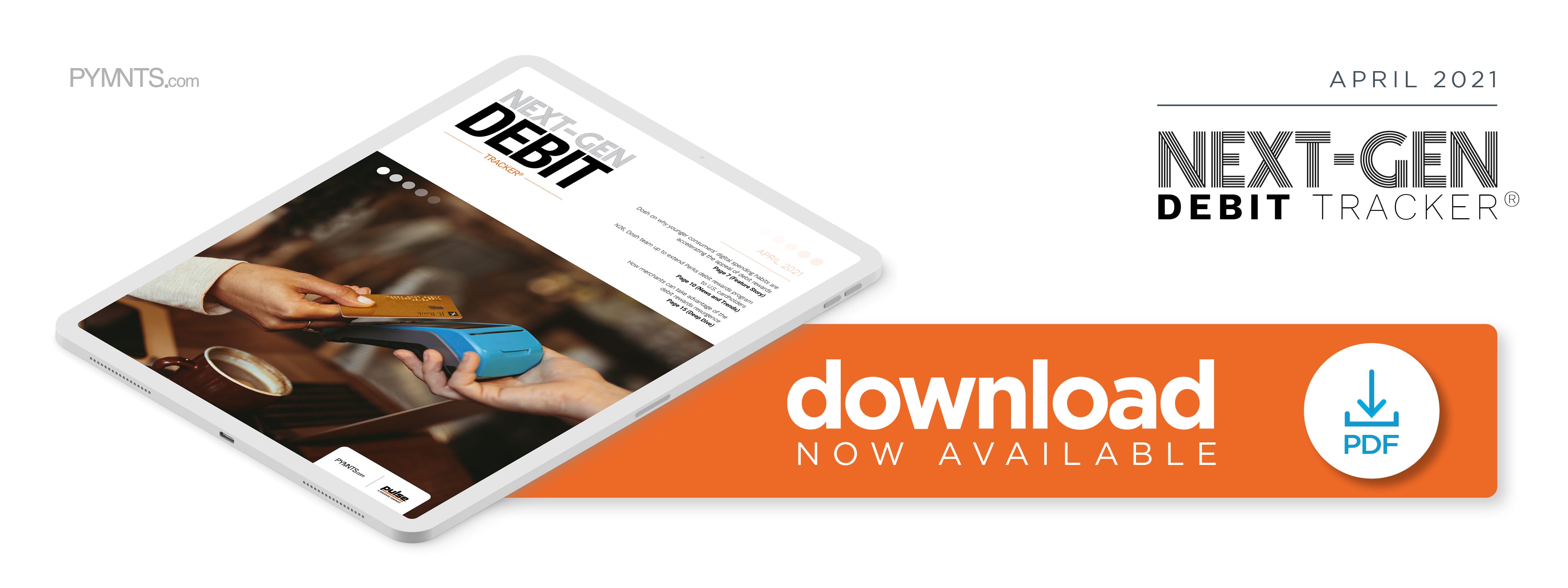Dosh On Why Younger Consumers’ Digital Spending Habits Are Accelerating The Appeal Of Debit Rewards

Rewards have long been synonymous with the use of credit cards, but many younger, digital-native consumers prefer debit. In the latest Next-Gen Debit Tracker, Ryan Wuerch, CEO of rewards app Dosh, explains how younger consumers’ digital payment preferences are shining a spotlight on debit rewards and how merchants can keep pace with the trend.
Consumers are always looking for features that can help them hang on to more of their money when transacting, and this desire has grown since the global health crisis began. Offering shoppers personalized rewards programs is one way in which merchants can satisfy this need.
The pandemic has not just increased consumers’ desire for rewards, however. It has also altered how consumers want to receive them and which payment instruments or devices they want connected to these programs, Ryan Wuerch, CEO of cash back and rewards app Dosh, said in a PYMNTS interview. He explained that most consumers now seek tangible financial gains that can be accessed immediately, partly due to the pandemic-related financial crisis. A December study on Dosh’s mobile app users found that 89 percent considered saving money to be a top priority, for example.
“Cash has become king,” Wuerch said. “Think back pre-pandemic, [and] it was rewards in the form of points or miles. But unfortunately, because of the pandemic, points and miles did not do anything for [consumers]. What does work and what everyone knows is what cash is, so now there is a heavier weight on cash than ever before. I want to know exactly what I’m getting, [and] when I get it, I want to be able to use it how I want to use it, not in some program.”
Consumers also expect the ability to attach cash back rewards to their chosen payment methods. Many more consumers, especially those belonging to younger generations, such as millennials or Generation Z, are tapping debit rather than credit cards at the physical or digital point of sale (POS) — and a growing share are eager to connect their rewards to these cards.
Marshaling The Power Of Debit Discounts, Rewards
Debit-based rewards are not a wholly new concept for most merchants, but their ability to participate in such programs has historically been limited. Wuerch said that debit cards’ lack of interchange fees — which are part of how banks make their profits and can also influence the rewards they offer — made them less tantalizing to the banks until recently.
This has begun to change, however, as digital banking grows and more digital-only or challenger banks enter the financial space. These banks’ offerings have proven particularly appealing to younger consumers, which could have a profound effect on the intersection of debit use and rewards.
“We are seeing consumers identify themselves with the bank that is most like them and thus [move to] all of the neobanks and challenger banks,” Wuerch said. “The acceleration of this has been incredibly high over the last 12 months, where people have begun moving away from the large [financial institutions (FIs)] that they had grown up [with]. In particular, the younger generation — the Gen Z [consumers], today — [these digital banks are] their primary banks. And the interesting part, [and] why we [work with] so many of them, is … a majority of them [are] debit.”
Dosh counts a large number of neobanks and FinTechs among its partners. Last month, it announced a partnership with digital-only bank N26 to support the latter’s Perks rewards system, for example, and it also powers rewards offerings for financial players like Jelli and PayPal-owned peer-to-peer (P2P) wallet Venmo. These institutions focus strongly on debit, as do the millennial and Gen Z consumers who make up the bulk of their user bases. Wuerch stated that these younger consumers simply expect to receive rewards when they swipe their debit cards.
“There is no going back on it now because [when it comes to choosing between] the one card that has [rewards and] the one card that does not, [consumers] are going to gravitate to … the one card that does,” he said. “So now it’s not even an option. Debit card providers, banks [and] neobanks, they have to provide it. More importantly, the merchants and the brands, they know they have to provide it, or they are going to lose to their competition who has that.”
Consumers’ use of digital banking tools and solutions is expected to continue growing over the next few years, meaning merchants must keep pace with this digital debit rewards trend. This shift could fundamentally change where and how users want to make payments and receive rewards.
Digital Wallets’ Starring Role
Digital wallets could play a particularly important role in the future of payments, Wuerch noted, especially as more consumers gravitate toward fully digital bank offerings. Consumers often connect these wallets to their bank or payment card accounts, meaning digital wallets could become more heavily tied to the rewards they receive. They could also use digital wallets differently in the future, he continued, turning them into an “accumulation point” for the rewards they receive when using them to make purchases.
“Then digital wallets actually become a transfer point for all of the values that [the consumers] are gaining, whether it be money they are putting in there, or money that somebody is actually giving them via rewards,” he said.
Merchants must pay attention to consumers’ shifting banking and payment preferences as well as how rewards and cash back programs could be integrated into the debit payment tools many prefer. The businesses that fail to do so risk falling by the wayside as their more tech-savvy competitors take the lead.
